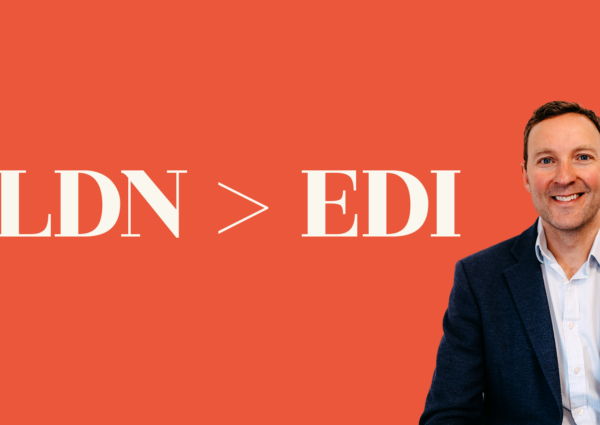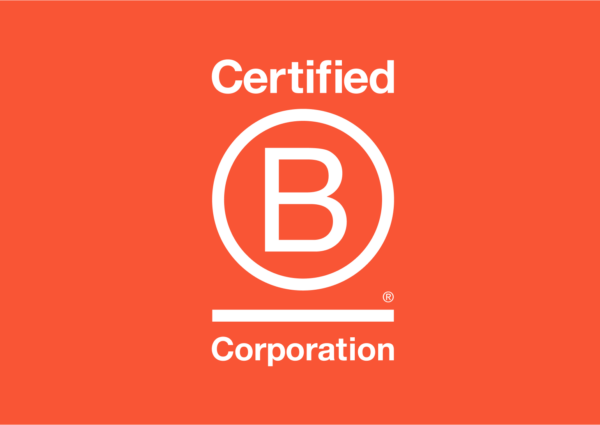How to Audit Your Brand: the five step guide
Sallie Bale • 6th Mar 2023

In today’s highly competitive marketplace, a strong and consistent brand is more important than ever. One way to ensure your brand is in top shape is by conducting regular brand audits. A brand audit is a thorough assessment of your brand’s strengths and weaknesses, identifying areas for improvement and uncovering hidden opportunities. As a marketing agency with expertise in brand audits, we’re here to guide you through the process, from initial development to delivering valuable insights that can help you elevate your brand.
What is a Brand Audit?
Start with the basics: what is a brand audit?
A brand audit is a comprehensive review and analysis of a company, brand, or product’s attributes, performance, and position in the marketplace. It is an important tool for businesses of any size and in any industry, as it helps to identify areas of improvement and opportunities for growth. It also helps to ensure that a company’s branding efforts are in line with their overall business strategy and objectives.
This guide will be discussing why and how to conduct a brand audit. It will include information about the different steps involved in the process and the various tools used to analyse a company’s performance and positioning.
In this Brand Audit Guide
- Why Conduct a Brand Audit: 5 situations where a brand audit is the appropriate tool to achieve your objectives, and 1 where it wouldn’t be.
- Brand Effectiveness & Measurement: An overview of key brand health metrics and how to measure them.
- Brand Audit Cost & Timelines: How to scope out what budget, times and resources are required to deliver a brand audit.
- How to Perform a Brand Audit: Steps to take when conducting a strategic audit of your brand.
- Tools for Conducting a Brand Audit
- Top Tips & Brand Audit Hacks
- How to do a Brand Analysis
- Conclusion
Why Conduct a Brand Audit?
A brand audit is a health check that looks at your brand’s position in the marketplace, and how to strengthen it.
Conducting a brand audit is essential for businesses of any size and in any industry. The process provides an effective way to gain a better understanding of the company’s current performance and positioning in the marketplace. It helps to identify any areas of improvement and opportunities for growth. It also helps to ensure that the company’s branding efforts are in line with the overall business strategy and objectives.
Conducting a brand audit is beneficial for both large and small businesses. For larger businesses, a thorough brand audit can identify areas where the company can improve their competitive edge and increase their market share. For smaller businesses, a brand audit can help to provide a clear understanding of the company’s current position and identify potential opportunities for growth.
5 situations where a brand audit is the appropriate tool to achieve your objectives, and 1 where it wouldn’t be.
Many things might trigger a strategic brand audit, and there could be a combination of reasons.
Often it starts with uncertainty.
The team is unsure about the current situation. They’ve perhaps been making decisions based on gut feel, or limited access to data.
There is a drive to gain more certaining about the true picture today, and get clarity and agree on where to go next.
This drive for certainty might come from the brand or marketing team. Or it could be driven by finance or at Board level.
Here are some common situations where it makes sense to conduct a brand audit.
- Stagnation or decline in sales and profits: core product range sales volumes are decreasing, and the organisation wants to understand a broader picture of what’s happening before making decisions.
- Negative shift in customer perception of the brand: as society changes, what customers value changes, and what they’re willing to tolerate changes. Better understanding these shifts with a brand audit can help make better decisions.
- Rising competition in the marketplace: new entrants keep popping up everywhere, and you want to know how worried you should be, and how you can maintain or grow your position in the market.
- Unclear impact of brand: you have a feeling you have a strong brand, but you’re not sure the impact it has on the success of the organisation.
- Change of guard: either a new CMO or new Board members who want to be confident they understand they lay of the land before making any big decisions.
When not to conduct a brand audit
There are many more situations where a brand audit can help a company achieve its goals, this is a small selection.
But, it’s not always the answer. For instance, if the brand is relatively new, there would be very little to audit, even if it was facing one or more of the challenges above.
Brand Effectiveness & Measurement

An effective brand is one that makes it easier, quicker or more cost-effective to reach the organisation’s vision and goals. Make sure measurement and evaluation is on your brand audit checklist before you get started, so you know what your end goal is likely to be.
You’d be amazed at how many people start a brand audit with no clear end vision. This is, to an extent, an exploratory process. But knowing what success looks like is so important.
Sallie Bale, Strategist, Lane
You might want to think about how your brand could make it easier to achieve your objectives, and find ways to measure whether it’s greasing the wheels, or being a greasy pole.
We recommend all brands that are serious about developing a strong, effective brand commission a quarterly brand health tracker.
This could include metrics such as:
- Awareness: How many people recognise your brand?
- Affinity: How much do people like your brand?
- Equity: What value do people assign to the brand?
- Perception: What do people think of your brand?
- Engagement: How often do people interact with your brand?
- Consideration: How many people are considering your brand?
- Advocacy: How many people are talking about your brand?
- Market share: How much of the market is controlled by your brand?
Brand Audit Cost & Timelines

There are many variables in calculating the cost and time involved in delivering a brand audit. Talking through your requirements and desired outcomes with an agency or consultant can help you better understand what is required. Feel free to reach out to our team for a chat about what it is you’re looking to achieve.
Things you’ll need to consider when putting together your brand audit budget include:
- How sure do you want to be about the validity and accuracy of the results? The more time you give to analysis, and if you include budget for primary research, you will have a more dependable answer.
- Will go DIY or will you hire a brand audit agency or consultant? If you opt to do it inhouse you need to consider how you will manage your day to day workload during the project.
- Who needs to be engaged in the project and to what degree? The more people that need to be involved in the process, the more input, insight and feedback will be generated. If you have a large, layered organisation you might want to consider including multiple rounds of amends to the final report.
- How many markets or geographies are you in? The wider spread the organisation is, the more data will need to be gathered to get an accurate picture.
- How complex is your brand/product ecosystem? Again, more complexity requires more time (and therefore budget!) to unpick, understand and make informed decisions.
Establish a clear scope
Before diving into the audit, it’s crucial to establish a clear scope, outlining what areas you will focus on and what specific goals you want to achieve. Consider the following areas:
- Brand Identity: Assess your logo, typography, colour palette, and overall visual language, and other distinctive brand assets
- Messaging: Evaluate your brand’s voice, tone, and key messaging across various channels
- Digital Presence: Examine your website, social media, email marketing, and other digital touchpoints
- Market Positioning: Analyse your competitive landscape and determine your brand’s unique value proposition
- Customer Experience: Collect and analyse customer feedback to identify areas for improvement
Essentially, factors that impact a brand audit budget are:
- Expertise
- Accuracy
- Complexity
Conduct a Brand Audit
Interested in finding out how Lane can support your business growth? Drop your details here and we’ll help you scope out your brand audit project.
The 5 Steps of a Successful Brand Audit: how to perform a brand audit

Conducting a brand audit involves several steps that should be followed in order to ensure the most accurate and comprehensive results. The following are the five main steps to consider when conducting a brand audit:
- Objectives and measurement
- Data gathering
- Analysis of findings
- Recommendations
- Creating a plan
1. Establish Goals and Objectives

The first step in the process is to establish the goals and objectives of the brand audit.
When defining the goals and objectives of a brand audit, it is important to focus on measurable objectives. For example, the goal of the audit could be to identify areas where the brand is performing well, and areas where it needs to be improved. Additionally, the audit should be designed to identify opportunities to strengthen the brand’s position in the marketplace.
You might also want to make a hypothesis to test at this point as well. If you’re undertaking a brand audit, you probably have a good reason for investing in it. What’s your hunch?
Situational Analysis

To establish the current lay of the land, gather all current brand assets and management information, and review together.
This should include a wide range of visual assets that demonstrate how the visual elements of the brand are being used across different channels for different audiences. As this includes an audit of the brand identity, having a design or brand expert review these collateral can give insight into their effectiveness, whether they’re providing a clear and consistent brand message, or muddying the waters.
Review recent data about the organisation, for example you might have access to market research, customer survey reports, staff satisfaction surveys, sales data and retailer feedback, online reviews, NPS.
Social media is a great place to understand how the brand is both being used and being received.
Generally speaking, a brand audit assesses three categories:
- Internal branding — the mission and vision, brand values, company culture, as well as internal branding, signage, newsletters
- External branding — the logo, advertising and marketing materials, PR, website, social media, and content marketing
- Customer experience — the customer journey, sales and support, and customer service reviews
Want to you want to look for in this data is:
- Brand Perception: How the brand is viewed by both customers and category users.
- Brand Equity: The value a customer assigns to the brand.
- Competitive Analysis: A comparison of the company’s brand performance and positioning to that of its competitors.
2. Gather Additional Data

Depending on the data you have access to, there will be gaps that need to be filled, either because that information has never been collected, or because it’s done infrequently and is out of date.
A few different types of research we’ve conducted for clients that can enhance the brand audit outputs and outcomes are:
- Focus groups: Getting insight from current and potential customers is fascinating and incredibly valuable.
- Surveys: Online customer surveys are a cost effective tool for testing the temperature of a variety of brand help metrics.
- Internal workshops: How do staff members and key stakeholder use the brand? Does it help or hinder them in their role?
- In-Depth interviews: By conducting in-depth interviews with customers, we can gain a better understanding of how they perceive the brand, what they think of certain marketing initiatives, and how they interact with the brand.
- Market research: Market research is a tool used to understand the size, structure, and characteristics of a particular market. This can help us better understand targeting opportunities, and new market opportunities.
3. Analysis of Findings

A brand audit analysis tends to generate a vast amount of data, so give yourself enough time to think and digest. You may want to take a few days, or even weeks, to percolate the information you’ve collected and what that means for your organisation.
Discuss it with colleagues. Talk it over. Challenge your assumptions and put on your different hats.
After collecting data, analyse it to identify trends, patterns, and areas for improvement. Look for inconsistencies in messaging, gaps in market positioning, and opportunities to enhance your digital presence. Use your findings to develop actionable recommendations for improvement.
Here are some questions to consider:
- What are the brand and organisational objectives? What’s the vision and mission? What’s the brand purpose?
- Who will you be presenting to? What are their key objectives? What’s their agenda?
- What are your distinctive brand assets?
- What strengths and weaknesses have you identified?
- What are the opportunities?
- What patterns are you seeing?
- What gaps are you seeing?
- What’s most important to your audience?
- What’s most important to the organisation?
- Are there any conflicts? Does anything not match?
- Are there quick wins?
- What are longer term, higher ticket items?
- What budget/resource are required for these projects? Where is it coming from?
Once you have your key recommendations, we find it helps to ‘soft launch’ them. Identify a smaller group of decision makers to workshop them with, before you present back your final recommendations in your brand audit report.
4. Recommendations

A successful brand audit culminates in a comprehensive report that highlights key findings and provides clear recommendations for improvement. Present your findings in a visually engaging, easy-to-understand format, and consider sharing the results with your team in a workshop or presentation to ensure buy-in and alignment.
Some common outcomes of a brand audit are include:
- Build a stronger brand strategy foundation – if the organisation lacks a clear proposition, personality or values, it’s challenging to communicate that consistently to the target audience.
- Explore a new market or audience segment.
- Explore broadening the target audience.
- Evolve or develop the brand identity to appeal to a new or wider audience.
- Review the customer experience and identify areas of improvement.
- Develop a new product, range or extension to exploit a new customer need or want.
- Drop a product or range as it’s cannibalising another product line.
- Develop a new social media strategy.
- Brief a new advertising campaign to communicate the brand proposition more clearly.
5. Implementation Plan

Once everyone is on the same page about your suggestions for improving the health of the brand and the performance of the organisation, you’ll need a plan of action.
This will include key information like a list of projects or workstreams with clearly identified budgets, resource and timelines.
It should also show how you plan to measure the success, turning these outputs into positive outcomes.
Tools for Conducting a Brand Audit

There are several tools and resources available for conducting a brand audit. These tools can help to ensure that the process is comprehensive and accurate. Some of the most common tools and resources include:
Surveys: Surveys are a great tool to gain insight into the public’s opinion of your brand, as well as measure the impact of your marketing initiatives. Examples of survey tools available in the UK are SurveyMonkey, Typeform, and QuestionPro.
Focus Groups: Focus groups allow you to gain in-depth insights from a targeted group of individuals. Tools such as Zoom, Skype, and Google Hangouts are widely used for conducting online focus groups.
Social Media Analytics: Social media analytics tools such as Hootsuite and Sprout Social provide marketers with powerful insights into the performance of their social media campaigns, as well as their followers’ preferences and behaviours.
Competitive Analysis: Competitive analysis tools such as SpyFu and SEMRush can provide detailed insights into your competitors’ online marketing efforts and strategies, allowing you to adjust your own accordingly.
Brand Tracking: Brand tracking tools such as Brandwatch and YouGov can help you measure how your brand is perceived by consumers, how it’s being discussed online, and how it’s performing in comparison to your competitors.
Top Tips & Brand Audit Hacks

- What’s the first step I should take in a brand audit? Work out exactly what you’re trying to achieve? What’s the problem you’re trying to identify?
- Get Board buy in: Top down belief in the brand audit is key, otherwise you may find it challenging to get budget for the outcomes of the audit. An outside expert may help cinch the deal.
- A brand audit should also take into account trends and changes in the marketplace in order to ensure that the company’s branding remains up-to-date.
- Get double data with YouGov. Did you know that if you commission a consumer survey with YouGov you get in-depth media consumption information about that audience.
- You don’t have to start from scratch. It is important to consider the company’s core values and mission when performing a brand audit, as these will help define the company’s unique branding strategy.
- Leave no stone unturned. A brand audit should include a review of the company’s online presence, as this is increasingly becoming an important aspect of branding.
- Don’t feel like you have to have all the answers. Work with other departments collaboratively, or get support from an outside brand agency if its feeling overwhelming.
- Branding is not a static process – it requires ongoing monitoring and adjustments to remain relevant and successful.
- Don’t forget to pool resources and insight from across the business. Brand doesn’t just live in the Marketing Department.
- If there’s not much information readily available on your industry or market, are their adjacent categories you can tap into?
How to Do a Brand Analysis
So, you’re wondering, “But what about a brand analysis?” Let’s dive into the world of brand analysis and explore how it differs from a brand audit. By the end of this section, you’ll have a clearer understanding of what’s included in a brand analysis and how to write a brand analysis report that’s both engaging and informative.
Firstly, let’s tackle the question: What is the difference between a brand analysis and a brand audit? A brand audit is a comprehensive examination of a brand’s current position in the market, evaluating its strengths, weaknesses, opportunities, and threats. In contrast, a brand analysis focuses on specific aspects of a brand, like its identity, image, or equity, to help identify areas of improvement.
What is Included in a Brand Analysis?
Now that we’ve established the distinction between a brand analysis and a brand audit, let’s look at what’s included in a brand analysis. Typically, it involves examining various components such as:
- Brand identity: This includes the visual elements like logo, colours, and typography, as well as the brand’s messaging and tone of voice.
- Brand image: How customers perceive the brand based on their experiences and interactions with it.
- Brand equity: The value that a brand adds to its products and services in the eyes of consumers, which influences their purchasing decisions.
- Market position: The brand’s standing in relation to competitors within the industry.
Writing an Engaging Brand Analysis Report
So, how do you write a brand analysis report that’s both informative and engaging? Here are a few tips to help you along the way:
- Begin with an introduction: Set the stage by introducing the brand and providing context for your analysis.
- Use storytelling and examples: Illustrate your points with anecdotes, case studies, or comparisons to other brands to make your content more vivid and memorable.
- Be inquisitive: Pose questions to your readers and encourage them to think critically about the brand and its performance.
- Offer recommendations: Provide actionable insights to help the brand improve its performance or address any challenges it may face.
- Conclude with a summary: Wrap up your report by summarising the key findings and recommendations.
So, conducting a brand analysis is an essential step in understanding a brand’s current state and identifying areas for improvement. By distinguishing it from a brand audit and following the tips provided, you’ll be well-equipped to create an engaging and informative brand analysis report that empowers your stakeholders to take action. So, grab a pen and paper, and start analysing!
Conclusion
Conducting a brand audit is an important tool for businesses of any size and in any industry. It provides a comprehensive review and analysis of a company, brand, or product’s attributes, performance, and position in the marketplace. It helps to identify areas of improvement and opportunities for growth, as well as ensure that a company’s branding efforts are in line with their overall business strategy and objectives.
This guide discussed why and how to conduct a brand audit. It included information about the different steps involved in the process and the various tools used to analyse a company’s performance and positioning. By following the steps and using the tools outlined in this guide, businesses of any size and in any industry can successfully conduct a brand audit and use the results to improve their competitive edge and identify potential opportunities for growth. If you’d like to hire a brand audit agency, or find out more about our brand audit service, do get in touch.


